The History of Management Trends

Management Evolves
As the level of complexity and pace of change has increased in the decades since the industrial revolution, management approaches have evolved to keep up. In this blog post we’ll walk through generational trends to see how the context of the day influenced the approach to effective management.
The rise of complexity
The military uses the acronym VUCA to describe the condition of the world today:

Let’s look at a few examples of the results of increased VUCA.
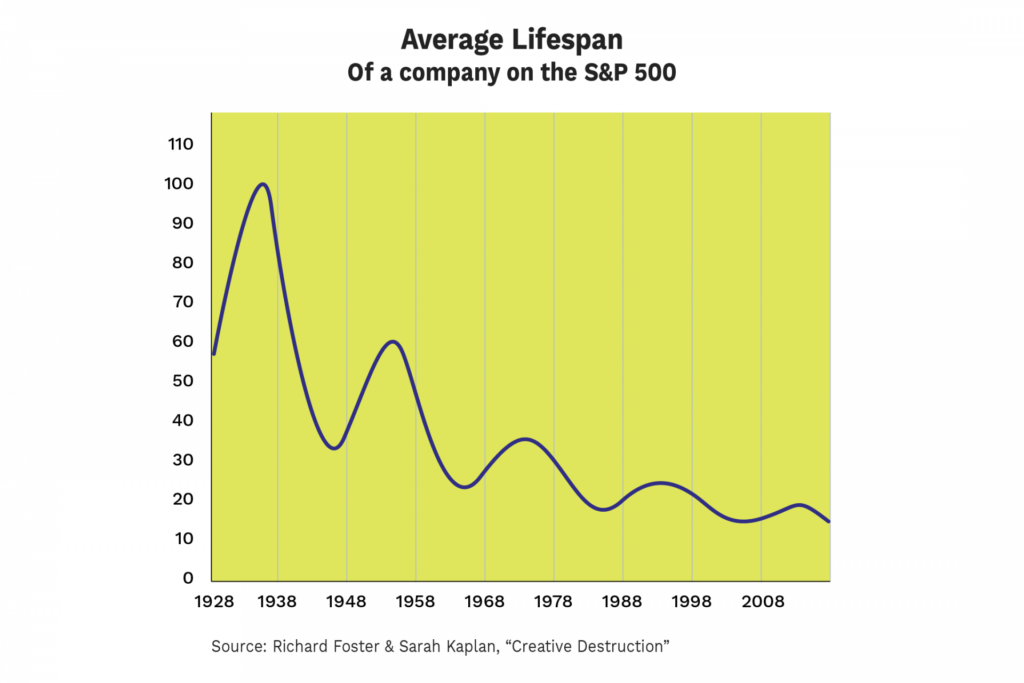

Root Cause: Technology
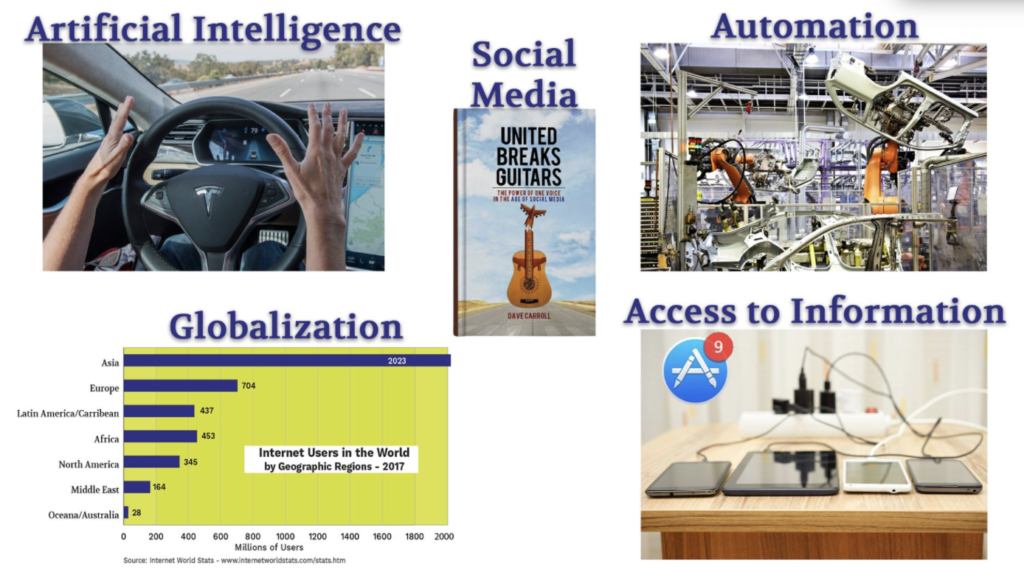
Technology is at the root of the increase in complexity and pace of change in the world. Think of how these five factors have fundamentally changed how business operates today:
- Global access to resources, especially information and capital, have shifted the competitive landscape from local to global.
- The speed of delivery of software has decreased expected time to market for a new product or service from years to days.
- Social Media has put the customer in the driver’s seat of any business. Their voice is heard and they know it.
- Automation is rapidly shifting the labor market landscape, creating uncertainty in markets and the need for radically different thinking about education and the meaning of work.
- Artificial Intelligence is beginning to displace even knowledge workers.
Two keys to managing complexity
As leaders over the decades have experimented with how to effectively manage complexity, two factors have emerged as key: how we treat the people doing the work, and how we manage systems. We’ll step through the decades to examine how these two factors have changed as new generations of leaders have tackled ever-increasing complexity.
We will start our tour in 1910 with Taylor’s Scientific Management approach, where the primary focus was on increasing efficiency.
Next, we’ll see how the influence of the military through World War I and World War II helped organizations scale efficiency to large corporations.
In the 1950s, we’ll look at two foundational shifts that began influencing the two key factors for addressing complexity.
On the people side, Douglas McGregor’s Theory X and Theory Y. On the systems side, Demming’s Plan-Do-Check-Act approach to using feedback loops to improve.
In the 1970s, the influence of Toyota unites McGregor and Demming with the Lean movement.
In the 1990s, Agile Software Development expands the Lean idea of continuous improvement beyond process to product, and emphasizes the importance of small, cross-functional, empowered teams.
Moving into the current trend, we see how these ideas are now expanding to organization-wide Agility.
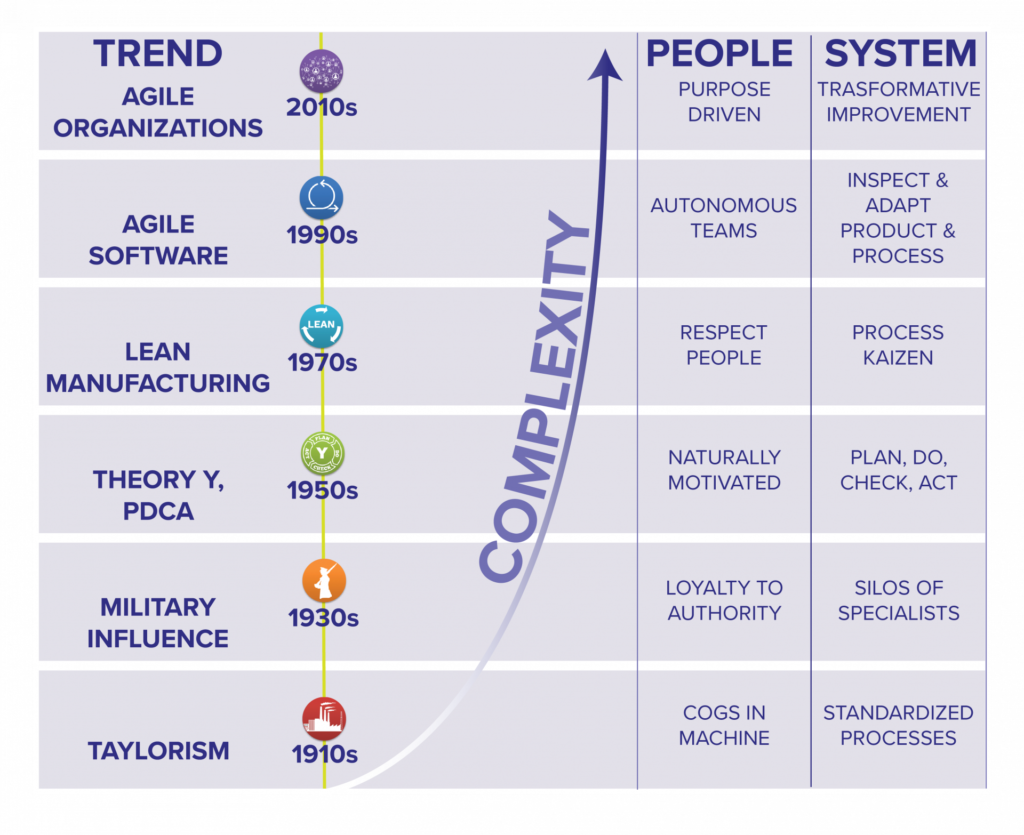
1910s – Taylorism

Taylorism – Maximizing Efficiency
The hot trend a century ago was Taylor’s Scientific Management. With the benefit of a century of perspective, it is easy to look at Taylor’s approach as cruel to workers and short-sighted. Taylorism is a favorite target for agilists, including me!
It is important to remember, though, that Taylor’s approach was revolutionary in its day. Taylor could repeatedly take a factory and increase production by 10x using his system. Taylorism unquestionably created a new level of prosperity in the world. It made manufacturing far more efficient than it had ever been, helping to create the economic boom of the 1920s.
Looking at the two keys to complexity (people and system), we establish a baseline with Taylor. His approach viewed people as resources that could be better exploited. They were, in his viewpoint, the most capable machines of the day, and he was able to help factories squeeze more and more out of that resource by increasing the efficiency of movement.
From a system standpoint, Taylor’s revolution was about standardizing work processes for maximum efficiency and repeatability. This was an important improvement given the context of the day, where U.S. Steel was the largest company in the world (the first to have a market capitalization above $1B), and the industrial revolution was beginning to peak:
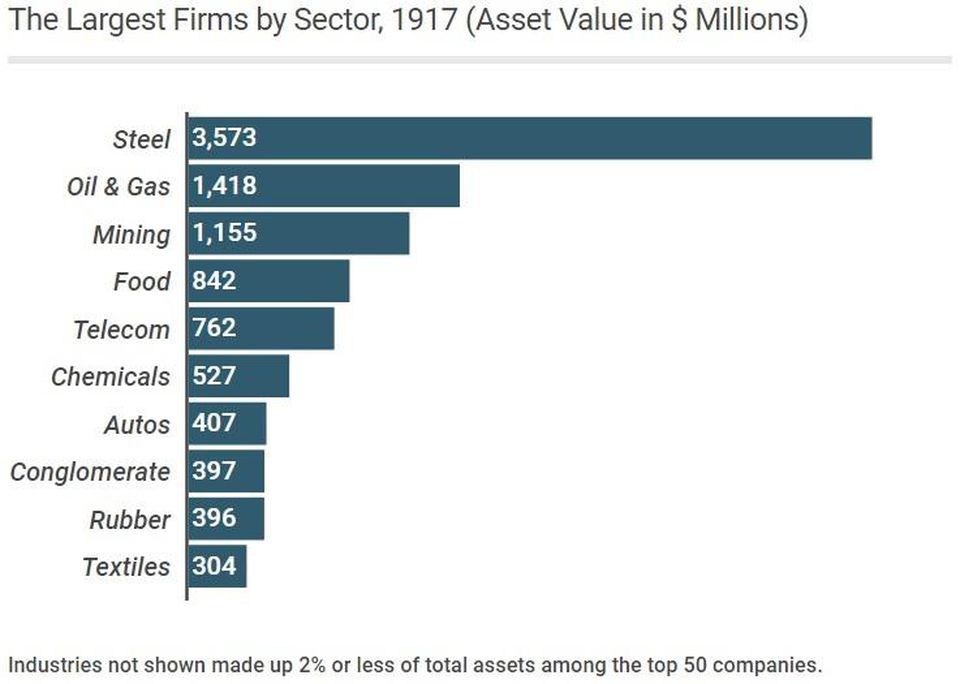
Viewed from the Cynefin standpoint, Taylor helped organizations squeeze everything they could from the Complicated domain. While our understanding of how to treat people has largely shifted since that time, his approach to standardized work is still foundational for work that is primarily in the Complicated domain.
1930s – Military Influence

Military Influence – Scaling Efficiency
The context of the 1930s and 1940s included improving labor conditions through the efforts of unions, the early start of a shift from commodities production like steel and oil towards products like automobiles, and the increased availability of electricity, telephones, and radios, and the communications capabilities these provided.
The World Wars in the first half of the 20th centuries provided a high-stakes and tragic crucible of management. Leaders had to coordinate strategy, supply chains, tactics, and communication across the globe and at a scale previously unimagined. As these soldiers and leaders returned to civilian life following the wars, they brought many new approaches home and began implementing them in the leading organizations of their day.
Looking at the two keys to complexity (people and system), we see a newfound capability to scale efficiency across large organizations. From a people standpoint, there was an increased view of loyalty to the company. The term “company man” was a common phrase to describe someone who was in it for life.
From a system standpoint, we see the specialized work of individuals spread to what we new refer to a silos in organizations. Perhaps best exemplified by Sloan at General Motors, organizations began to look more and more like military structures, with specialized departments communicating through hierarchical management chains.
1950s – Early seeds of Complexity Management

Theory Y and PDCA: Seeds of effective approaches to complexity
The period of the 50s and 60s saw technology growing faster than ever before.

As noted above, technology is the primary driver of increased complexity, and we see the early seeds of the two keys to effectively managing complexity becoming introduced in the 1950s.
On the people side, MIT professor Douglas McGregor publishes his book The Human Side of Enterprise, where he describes two camps of management: Theory X, and Theory Y. Theory X holds that employees are inherently disinclined to work and need to be strictly controlled. Theory Y holds that employees should be trusted and empowered. McGregor showed—at a time when labor-management relations were becoming more adversarial—that there was another way to view workers and leadership.
On the systems side, W. Edwards Deming, an American statistician, is sent to Japan to help revitalize their economy through a focus on improved quality. He is often hailed as the inspirational force that helped change the perception of Japanese quality from very poor to world-class.
A key idea from Deming was the idea to make improvements through feedback loops. He is well known for the “Deming Cycle”, which recommends that improvements be made in a series of repeating steps: Plan-Do-Check-Act, or PDCA. Later writing by Deming shows that he came to prefer the term Study over Check.
1970s – Lean Manufacturing

Lean Manufacturing – Uniting the People and Systems Spectrum
Toyota’s rise to the top of the automobile industry began in the 1970s. Taiichi Ohno, known as the father of the Toyota Production System and Lean Manufacturing, was not a direct student of Deming, but you can see Deming’s influence everywhere at Toyota.
TQC, mentioned in the quote below by Masao Nemoto, Managing Director at Toyota, stands for Total Quality Control, the idea that quality is a focus throughout the value stream from design through delivery.
They said that TQC heightened quality awareness among employees; that everyone shared ideas about ways to solve problems; that TQC promoted cooperation among the people in product technology, production engineering, and manufacturing; and that it mobilized employees throughout the company in kaizen initiatives through team activities.
That’s how we at Toyota ended up tackling TQC. We went to work on TQC in 1961, and we earned the Deming Application Prize in 1965 and the Japan Quality Medal [from the Union of Japanese Scientists and Engineers] in 1970. What is most important is that our quality really did improve dramatically over that time. And around 1970, our exports to the United States finally took off.
TQC was thus a success at Toyota. It succeeded because we acknowledged forthrightly that we had problems with quality and because someone in senior management [Eiji Toyoda] had a clear vision of what we were setting out to do. Authors like Jeffrey Liker and James Womack wrote books describing the Toyota Product System to an American audience, and the Lean Manufacturing movement took off. Combining the ideas of Deming’s PDCA improvement process, Just In Time manufacturing, and Taiichi Ohno’s Confucian roots of respecting people, we see the two keys of managing complexity combined.
On the people side, there is a tremendous emphasis in Lean on a belief that respecting and engaging the workers in the process of improvement is critical to success.
On the systems side, we see the entire organization focused on rapid learning to improve the process of manufacturing.
As the personal computer is born, Toyota and other Lean companies provide a template for addressing greater complexity by combining a deep respect for the people doing the work with a focus on fast feedback and learning.
1990s – Agile Software

Agile Software – Autonomous Teams, Iterative Products
As software development surged ahead with the proliferation of the personal computer, complexity in business begins to ramp up to new levels. Software development provides a lower cost of iteration than hardware products, and the need to iterate much more frequently to discover the best solutions for customers.
Early software projects were plagued by taking a traditional, plan-driven approach to the work, one that is best suited to complicated problems. Frustrated over failed projects, unused capabilities, and budget and date overruns, software developers began experimenting with new approaches.
The Manifesto for Agile Software Development, written in 2001, coalesces the thinking of several software developers who were discovering similar successful patterns for managing these more complex products.
Many of these developers were firmly steeped in Lean thinking. Jeff Sutherland, the co-inventor of Scrum, was in attendance and was highly influenced by a 1986 Harvard Business Review article called The New, New Product Development Game. Authors Takeuchi and Nonaka, studying companies taking a lean approach, describe a team-centric approach to new product development. They use a sports analogy, describing this new approach as “Scrum Project Management”, where the cross-functional team takes the ball down the field as a team, vs. handing off work between phases and silos of an effort.
The traditional sequential or “relay race” approach to product development—exemplified by the National Aeronautics and Space Administration’s phased program planning (PPP) system—may conflict with the goals of maximum speed and flexibility. Instead, a holistic or “rugby” approach—where a team tries to go the distance as a unit, passing the ball back and forth—may better serve today’s competitive requirements.
Agile Software Development extends on Lean in two key ways:
- On the people side, there is an increased focus on cross-functional, self-organizing teams delivering end-to-end value.
- On the system side, the idea of continuous improvement (or kaizen) is extended beyond process efficiency to include continuous product improvement.
2010s – Toward Agile Organizations

Agile Organizations – Purpose Driven and Transformational
We are still in the midst of this generational trend, and so any conclusions are highly subject to bias and conjecture. However, if the expanding approach to people and systems continue, a few observations may stand the test of time.
There is a clear need for greater Agility in organizations small and large across industries. In this case, we define Agility broadly as the capability to rapidly respond to feedback in service of delivering more value to customers.
As more and more software and IT teams saw significant improvements in their development of products, adjacent groups in those firms began experimenting with similar approaches.
Today, we see movements around Agile Marketing, Agile HR, Agile Operations, and even in hardware manufacturing. Related movements like Beyond Budgeting and the Corporate Liberation movement are infused with the same thinking and approach to complexity. Each of these expansions beyond software is leading to the concept of an organization that is agile throughout.
In organizations seeking to take this approach, there is an expansion in the two keys beyond the Agile Software movement.
On the people side, there is an increased focus on purpose and meaning in the work. We know from engagement research that a clear connection to the purpose of the work is critical if we want people to apply their creativity and energy to complex problems.
On the system side, the focus is on connections and collaboration between teams to help create transformative improvement. While an Agile Software team may iteratively improve on a product, an Agile Organization may transform itself into new product lines, services, and structures to better serve the rapidly changing needs of its customers.
The history of management techniques and thinking has largely changed due to the technological advances of the current day and age. Clearly, at this moment in time, agile is the best iteration so far… so the question is:
What will come next?




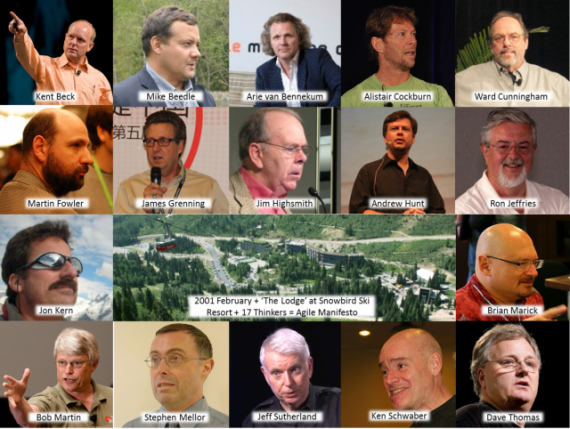

Wow this is such a powerful visual!
Thanks! Hard work and research from the AFA team!